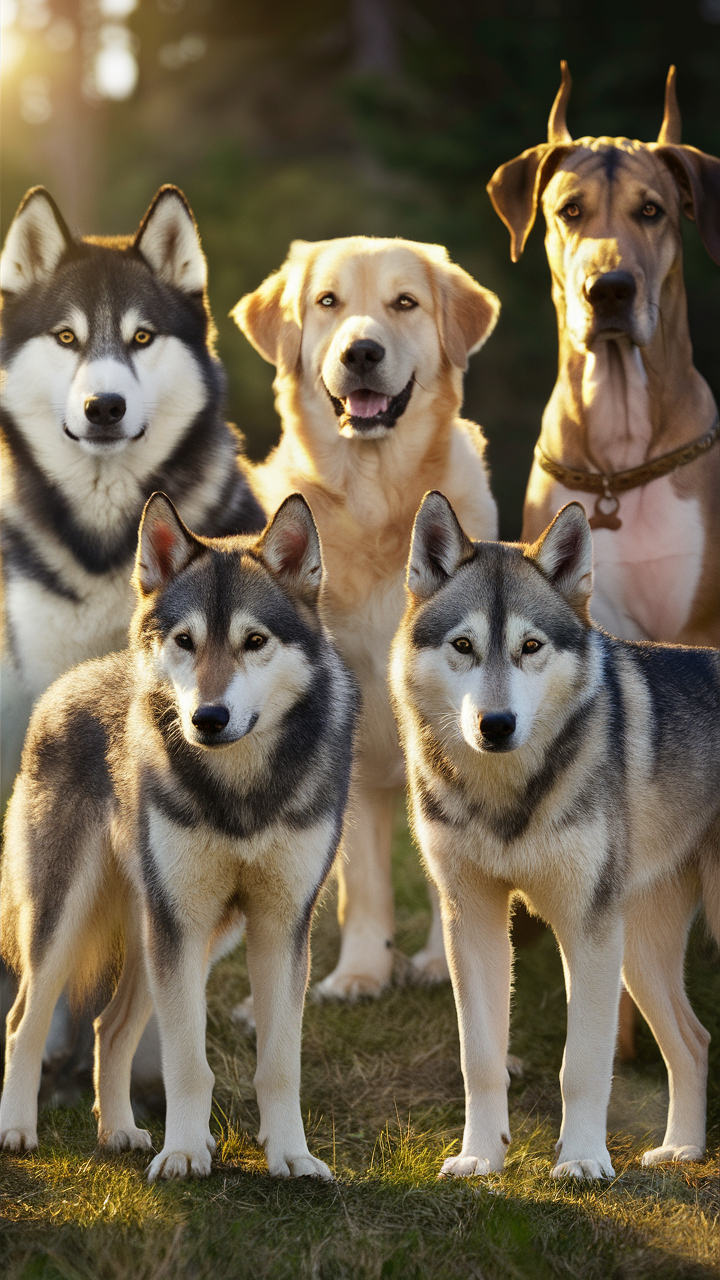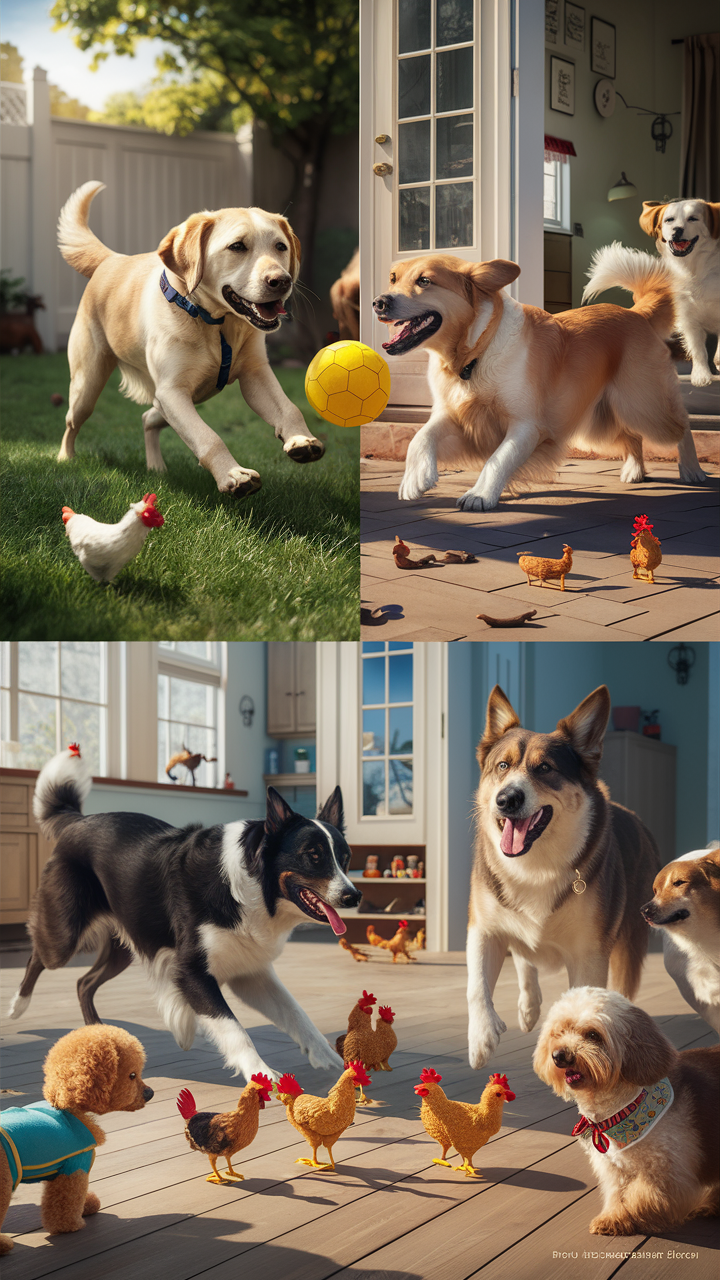- Premium Food Topper for Cats and Dogs
- Collagen and Chondroitin Sulfate
- Help Boost the Quality of Your Pet’s Coat and Skin
- 20 FL Oz Pouch
Introduction
The history of dog domestication is a fascinating tale that highlights the deep bond between humans and dogs. Over thousands of years, domestic dogs have evolved from their wild ancestors, the gray wolf, through a process known as the domestication of the dog. This transformation has been significantly influenced by the domestication process, where early dogs accompanied humans, adapting to various roles in human society. The origin of domestic dogs traces back to ancient times when the first domesticated dogs began living alongside human communities. Studies on the dog genome reveal that these early dog populations shared a common ancestry with wolves and dogs, emphasizing the intertwined relationship between these species.
The history of dog domestication is further illuminated by genetic evidence, which highlights the dynamic early history of dogs and humans. Research indicates that the origins of the domestic dog likely stem from multiple regions, with the east Asian origin of domestic dogs being one prominent theory. Ancient dog may have been domesticated in various parts of the world, leading to diverse dog lineage and the dual origin of domestic dogs hypothesis. This complex evolutionary history is evident in the diverse dog reveals patterns found in different breeds today. Understanding the evolutionary history of dogs provides insight into how animal domestication has shaped the unique bond between dogs and humans throughout history.
Key Takeaways
- The history of dog domestication shows a deep bond between humans and dogs, evolving from gray wolves through the domestication of the dog.
- Early dogs accompanied humans and adapted to various roles in human society, shaping the origin of domestic dogs.
- Studies on the dog genome reveal a common ancestry between wolves and dogs, emphasizing their intertwined relationship.
- Genetic evidence suggests the origins of the domestic dog stem from multiple regions, with a notable east Asian origin of domestic dogs.
- The dual origin of domestic dogs hypothesis highlights diverse dog lineage and the evolutionary history of dogs.
- Understanding the evolutionary history of dogs provides insight into how animal domestication has shaped the bond between dogs and humans.
The Role of Selective Breeding in Shaping the Modern Dog

Selective breeding has played a crucial role in shaping the modern dog, allowing humans to create a wide variety of breeds with distinct physical and behavioral traits. Over thousands of years, humans have selectively bred dogs for specific purposes, such as hunting, herding, guarding, and companionship. This process has led to the development of hundreds of different breeds, each with its own unique characteristics and abilities.
Development of Physical Traits
Selective breeding involves choosing individuals with desirable traits and breeding them together to produce offspring with those traits. This process has allowed humans to create dogs with a wide range of physical characteristics, such as size, coat type, and color. For instance, the domestication of the wolf into different breeds has resulted in diverse physical appearances, including the village dog and the American dog.
Behavioral Traits and Their Impact
Selective breeding has also been used to develop dogs with specific behavioral traits, such as intelligence, trainability, and sociability. Through selective breeding, humans have been able to create dogs that are well-suited to a wide variety of tasks and environments. This is evident in how dogs have been used for herding, guarding, and companionship throughout history, demonstrating their versatility and adaptability.
Genetic Disorders and Health Concerns
While selective breeding has allowed humans to create dogs with a wide range of desirable traits, it has also led to the proliferation of genetic disorders and health problems in certain breeds. In recent years, there has been growing concern about the welfare of purebred dogs, as many breeds suffer from a range of inherited health issues. Efforts are being made to promote responsible breeding practices and develop new strategies to improve the health and well-being of dogs.
The Evolution of Canine Behavior: From Hunters to Household Pets

The evolution of canine behavior is a fascinating subject that sheds light on the ways in which dogs have adapted to life alongside humans. Wolves, the ancestors of modern dogs, are highly social animals that live in complex family groups known as packs. These packs are organized around a strict hierarchy, with each member playing a specific role in the group’s social structure. This social organization has been retained in domesticated dogs, which often form close bonds with their human families and view them as part of their pack.
Retained Ancestral Instincts
In addition to their social nature, dogs have also retained many of their ancestral hunting instincts. Even today, many dogs exhibit behaviors such as chasing and retrieving, which are remnants of their wild hunting behavior. These instincts have been harnessed by humans for thousands of years, as dogs have been used for hunting game, herding livestock, and protecting property.
Adaptation to Human Society
As dogs have transitioned from working animals to household pets, their behavior has continued to evolve. Many modern dogs have been bred for specific purposes, such as companionship or competitive sports, leading to a wide range of behavioral traits among different breeds. Despite these differences, all dogs share a common ancestry and retain many of the same basic instincts and behaviors that have allowed them to thrive alongside humans for thousands of years.
Genetic Evidence: Tracing the Ancestry of Modern Dogs
Advances in genetic research have provided valuable insights into the ancestry of modern dogs and the ways in which they have evolved over time. Studies have shown that all modern dogs are descended from a single population of wolves that lived in Asia over 15,000 years ago. This population eventually gave rise to the diverse array of dog breeds that exist today, through a combination of natural selection and human intervention.
Key Findings from Genetic Research
Origins and Evolution: Genetic studies suggest that all modern dogs are descended from a single population of wolves that lived in Asia over 15,000 years ago. This population eventually diversified into the numerous breeds we see today through natural selection and human intervention.
Dual Origin Theory: Some research indicates a dual origin for domestic dogs, suggesting that dogs may have been domesticated more than once in different regions. This dual origin theory helps explain the genetic diversity found among modern dog breeds.
Ancient Wolf DNA: Studies of ancient wolf DNA have revealed that some modern dog breeds, such as the Siberian Husky and the Alaskan Malamute, have genetic connections to ancient wolf populations. This indicates that these breeds have retained more ancestral wolf traits compared to other breeds.
Health and Genetic Diversity: Genetic research has also highlighted the impact of selective breeding on dog health. By identifying genetic mutations associated with inherited health conditions, researchers aim to develop breeding strategies that reduce these issues and promote genetic diversity.
The Origin of Dogs
Genetic evidence has highlighted that the origin of dogs can be traced back to a single origin in Asia. Data indicate a single origin for dogs south of the Yangtze River, supporting the theory that these early dogs were the first to be domesticated. The ancient origins of the domestic dog reveal a fascinating evolutionary journey from the late Pleistocene dogs to the varied breeds we see today.
Genetic Relationships Among Breeds
Research on the wolf genome has also shed light on the relationships between different dog breeds and their wild ancestors. For instance, DNA analysis has revealed that certain breeds, like the Siberian Husky and the Alaskan Malamute, are more closely related to ancient wolf populations than other breeds. This suggests that these breeds have retained more of their ancestral wolf-like traits than others, indicating a strong dog and wolf genetic connection.
Implications for Health and Breeding
In addition to providing insights into the ancestry of modern dogs, genetic research has also been used to study inherited health conditions in dogs. By identifying the genetic mutations that underlie these conditions, researchers hope to develop new treatments and breeding strategies to improve the health and well-being of dogs. This research is crucial for understanding the domestication syndrome and its impact on dog health, aiming to ensure healthier dog populations in the future.
The Cultural and Historical Significance of Dogs in Human Society

Dogs have played a significant role in human society for thousands of years, serving as companions, workers, and symbols of status and power. In many cultures around the world, dogs are revered as loyal companions and protectors, with numerous myths and legends celebrating their bravery and loyalty. Dogs have also been used for practical purposes such as hunting, herding livestock, and guarding property, making them indispensable members of many human communities.
Dogs in Ancient Civilizations
Throughout history, dogs have been depicted in art, literature, and religious texts as symbols of loyalty, courage, and devotion. In ancient Egypt, for example, dogs were often depicted in tomb paintings and sculptures as loyal companions to their owners in the afterlife. This cultural reverence is not limited to Egypt; in ancient China, the domestic dog in southern east Asia was considered a protective spirit. Similarly, Greek mythology featured the three-headed dog Cerberus, guarding the gates of the underworld, symbolizing the boundary between life and death.
Dogs in Warfare and Exploration
In addition to their cultural significance, dogs have also played important roles in historical events and exploration. For example, during World War I and World War II, dogs were used as messengers, sentries, and search-and-rescue animals on the battlefield. This utilization of dogs demonstrates their adaptability and significance in human endeavors. In more recent times, dogs have been used in search-and-rescue missions following natural disasters such as earthquakes and hurricanes, further highlighting their invaluable contribution to human society.
“Dogs have given us their absolute all. We are the center of their universe. We are the focus of their love and faith and trust. They serve us in return for scraps. It is without a doubt the best deal man has ever made.” – Roger A. Caras
The Impact of Domestication on Canine Health and Well-being

The domestication of dogs has had a profound impact on their health and well-being, leading to both positive and negative consequences. Domesticated dogs benefit from access to food, shelter, and veterinary care that wild animals do not have, resulting in longer lifespans and improved overall health. Additionally, social interaction with humans and other animals contributes significantly to their mental well-being.
Effects of Domestication
Access to Veterinary Care and Improved Health: Domesticated dogs benefit from regular veterinary care, which has significantly improved their overall health and extended their lifespans. This care includes vaccinations, treatments for diseases, and general health check-ups that wild animals do not receive.
Mental Well-being Through Social Interaction: Dogs that live with humans enjoy regular social interaction, which contributes to their mental well-being. Interaction with humans and other animals helps reduce stress and anxiety, providing a stable and enriching environment for dogs.
Genetic Disorders from Selective Breeding: Selective breeding practices have led to an increase in inherited health conditions in some dog breeds. Conditions like hip dysplasia, heart disease, and various cancers are more prevalent in certain purebred dogs due to a limited gene pool and breeding for specific traits.
Promoting Responsible Breeding Practices: To counteract the negative effects of selective breeding, there is a growing movement towards responsible breeding practices. These include genetic testing and breeding strategies aimed at increasing genetic diversity and reducing the prevalence of inherited health issues.
Positive Effects of Domestication
One of the most significant benefits of domestication is the increased access to veterinary care, which has improved the overall health of dogs. The transition from wild animals to palaeolithic dogs and eventually to household pets means that dogs were domesticated and adapted to living closely with humans. This proximity has led to advancements in dog healthcare, ensuring that they live longer and healthier lives.
Negative Effects of Selective Breeding
On the other hand, domestication has also led to an increase in inherited health conditions in certain dog breeds. Selective breeding practices have often prioritized specific physical or behavioral traits, sometimes at the expense of overall health. For example, many purebred dogs suffer from genetic disorders like hip dysplasia, heart disease, and certain cancers. These health issues are often exacerbated by a limited dog gene pool, which reduces genetic diversity and increases the risk of inherited conditions.
Promoting Responsible Breeding Practices
In recent years, there has been a growing concern about the welfare of purebred dogs and the impact of selective breeding on their health. Efforts to promote responsible breeding practices focus on prioritizing the health and well-being of dogs over specific physical traits. This includes genetic testing and selective breeding practices that emphasize genetic diversity, aiming to reduce the prevalence of inherited health conditions and ensure healthier future generations of dogs.
The Future of Dog Domestication: New Breeds and Changing Roles
The future of dog domestication is likely to be shaped by ongoing changes in human society and advances in genetic research and technology. As human lifestyles continue to evolve, so too will the roles that dogs play in our lives. For example, there is growing interest in developing new breeds of dogs that are well-suited to urban living, with traits such as smaller size, lower energy levels, and reduced shedding.
Urban-Friendly Dog Breeds
As cities grow and urban living becomes more prevalent, there is a demand for dog breeds that are better suited to apartment life. These breeds would need to have characteristics like smaller size, lower energy levels, and minimal shedding. Developing these traits through selective breeding can help create dogs that fit more seamlessly into the fast-paced urban lifestyle. The origin for domestic dogs has shown that adapting to human environments is a continuing trend, seen from dogs south of Yangtze River to dogs into the Americas.
Genetic Research and Health Improvements
Advances in genetic research hold promise for improving the health and well-being of dogs in the future. By identifying genetic mutations responsible for inherited health conditions, researchers can develop new treatments and breeding strategies. These strategies aim to reduce the prevalence of conditions like hip dysplasia, heart disease, and other genetic disorders. Insights from ancient dog genomes and dog and wolf genomes can help in understanding the genomic signature of dog domestication, aiding in healthier future breeds.
Conclusion
The history of dog domestication highlights the profound and enduring bond between humans and dogs. Over thousands of years, domestic dogs have evolved from their wild ancestors, the gray wolf, through a process of domestication that involved close interaction with humans. This transformation has led to the development of numerous breeds, each with unique characteristics shaped by selective breeding and the evidence suggesting a dual origin of these dogs. Studies on dog and wolf genomes reveal a shared ancestry, emphasizing the intertwined relationship between these species.
As we continue to explore the ancient dog remains and understand the human and dog lineages, the significance of early domestication becomes clearer. The initial domestication process involved adapting to human environments, as evidenced by dog fossils and the neolithic dog findings. Insights from genetic research provide a deeper understanding of the origin of dog domestication, helping to inform responsible breeding practices and improve the health and well-being of future dog populations. The rich history underlying dog domestication underscores the importance of preserving the genetic diversity and welfare of our canine companions.

James Dunnington leads the James Dunnington Collection, featuring five unique blogs: a practical Pet Care Guide, an enlightening Ancient History Blog, a resourceful Home Improvement Guide, a cutting-edge Tech Innovation Guide, and a strategic Online Money Making platform. Each site delivers valuable insights designed to empower and inform. For updates and more tips, visit our Contact Us page to sign up for our newsletter, ensuring you never miss out on the latest content from any of these dynamic fields.
